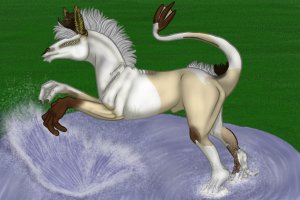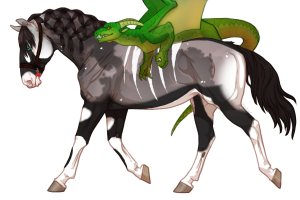ᗩᐯIᗩᖇY
SᑭEᑕIES IᑎᖴOᖇᗰᗩTIOᑎ
The Aviary is a wildlife sanctuary that is home to many colorful birds, colloquially referred to as "avians". In order to keep the local population under control, Avians are frequently adopted out to new caretakers who keep them in their own local aviaries.
Researchers are always out in the field trying to discover more species of Avians, but at the present day there are 3 species kept at the Aviary: Parulids, Passerids, and Parids.
Parulids are primarily insectivores, flitting around forest treetops catching bugs to eat. Their small, pointed beak gives them dexterity when catching food, and their long wings and tails are particularly expressive. They use their bright, bold colors and energetic motions to interact with other Avians, and are often flamboyant, loud, and social.
Passerids are primarily seed-eaters, with strong, angular beaks that help them extract and crack open seeds from flowers and other plants. They have short wings and tails, and are most often found on the ground or in fields and grasslands. Passerids tend to be more neutral or camouflaged colors, and have more shy personalities.
Parids are bold Avians with short, small beaks used for eating just about anything, as they are omnivorous! Parids are exceptionally territorial, using the feather crests on their heads to signal their dominance of an area and singing aggressively at other Avians to stake their claims. They often bold black or white patterns visible in their plumage, sometimes with a splash of color.
The Aviary is a wildlife sanctuary that is home to many colorful birds, colloquially referred to as "avians". In order to keep the local population under control, Avians are frequently adopted out to new caretakers who keep them in their own local aviaries.
Researchers are always out in the field trying to discover more species of Avians, but at the present day there are 3 species kept at the Aviary: Parulids, Passerids, and Parids.
Parulids are primarily insectivores, flitting around forest treetops catching bugs to eat. Their small, pointed beak gives them dexterity when catching food, and their long wings and tails are particularly expressive. They use their bright, bold colors and energetic motions to interact with other Avians, and are often flamboyant, loud, and social.
Passerids are primarily seed-eaters, with strong, angular beaks that help them extract and crack open seeds from flowers and other plants. They have short wings and tails, and are most often found on the ground or in fields and grasslands. Passerids tend to be more neutral or camouflaged colors, and have more shy personalities.
Parids are bold Avians with short, small beaks used for eating just about anything, as they are omnivorous! Parids are exceptionally territorial, using the feather crests on their heads to signal their dominance of an area and singing aggressively at other Avians to stake their claims. They often bold black or white patterns visible in their plumage, sometimes with a splash of color.
ᖇᑌᒪES
🪶 Avians must be kept on CS, and any off-site storages must link back to this post.
🪶 Avians currently cannot be sold or traded for anything other than other Avians. This rule may change later.
🪶 Users may adopt as may Avians as they want.
🪶 Do not claim any art or designs associated with Avians as your own if you are not the artist.
🪶 Customs and MYO will be available in the future.
🪶 Avians must be kept on CS, and any off-site storages must link back to this post.
🪶 Avians currently cannot be sold or traded for anything other than other Avians. This rule may change later.
🪶 Users may adopt as may Avians as they want.
🪶 Do not claim any art or designs associated with Avians as your own if you are not the artist.
🪶 Customs and MYO will be available in the future.























